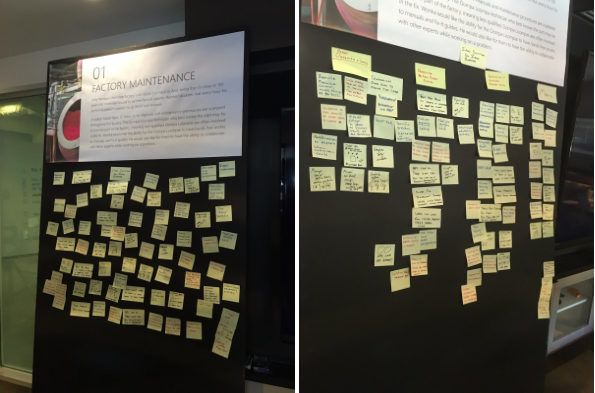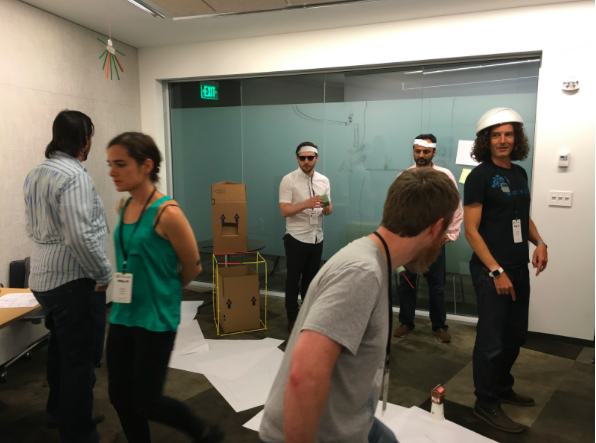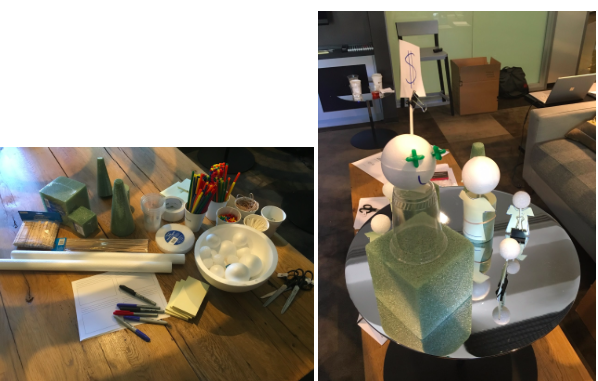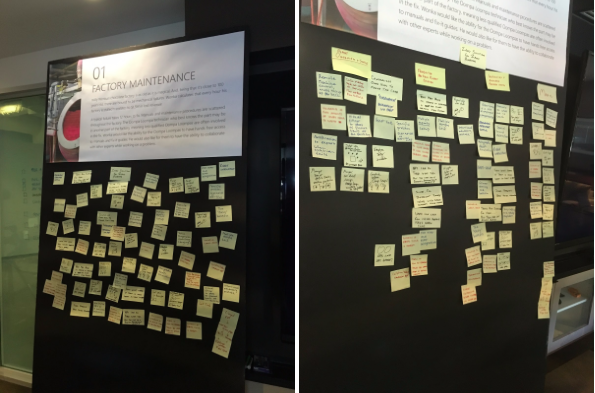This is part of our series covering our sessions at Microsoft's Hololens Agency Readiness program, something we're excited to be participating in with only a few other agencies. Read more about our work with Hololens (and mixed reality) here.
During our first session at Microsoft, we did the Envisioning Workshop, a product ideation process that Microsoft uses for Hololens products. It's much like our design sprint, but the 3D nature of Hololens products brings about a few different methodologies.
First, we identified the problem we needed to solve. Then we entered a sticky-note phase where we were each encouraged to write any and all ideas that came to mind and stick them onto the board. We got about 30 minutes to collaborate and discuss our ideas; by the end of the phase, each group had 60 to 100 sticky notes on the board.

Many ideas means many sticky notes.
Conceptually, the idea of this phase is similar to our sketch phase in the design sprint, but the process and results were perhaps very different. Our sticky-note phase is silent -- we only draw sketches, keep words to a minimum, and get as many stickies on the board without conversing about our drawings. First, we vote silently on everyone’s stickies based on our perceptions of the drawings. We then take turns explaining our sketches and having a final round of voting after getting the full picture of all ideas. This process often allows new ideas to surface between the two voting sessions.
The ideas generated in the Envisioning Workshop were largely influenced by our conversation, while through our sticky-note method back home, we start exploring ideas without the influence of others and merge ideas later through collaborative conversation. For better or for worse, I can see value in both approaches to the design ideation process.
The next phase of the workshop was to consolidate those ideas into popular themes and deciding where to move forward. Consolidation is an extremely important part of the process because it surfaces the most popular ideas within the collective group, which often turn out to be the best or safest options. I thought this phase went by more quickly than the design sprint.

This was part of the acting phase of our ideation. Philippe is on the far right with the white bowl on his head.
The prototyping phase was the last portion of this accelerated workshop and perhaps the most valuable part for us. We didn't have time to create anything technical, so our task was to use arts and crafts objects (like the ones we all used in elementary school) to create representations of holograms in our space. We then created a set and scenario to act out the end-user's action while using the Hololens in his/her given situation.
Acting is useful when demonstrating a concept using the Hololens, as the technology is made for users to interact with virtual and physical object simultaneously. The use of physical space is necessary in contrast to interactions on a 2D prototype as they are all occur on a screen.
Having said that, I realize the method of acting the entire user flow out can be really useful for prototyping web and mobile app products as well. It will bring the entire user flow to life -- especially the stages before and after the use of the product.
I'm happy Microsoft guided us through the Envisioning Workshop as an introduction to our six-month agency readiness program. There are many elements we can take from the experience and apply to our internal process when solving design problems in both 2D and 3D interfaces.

Prototyping with physical objects.

